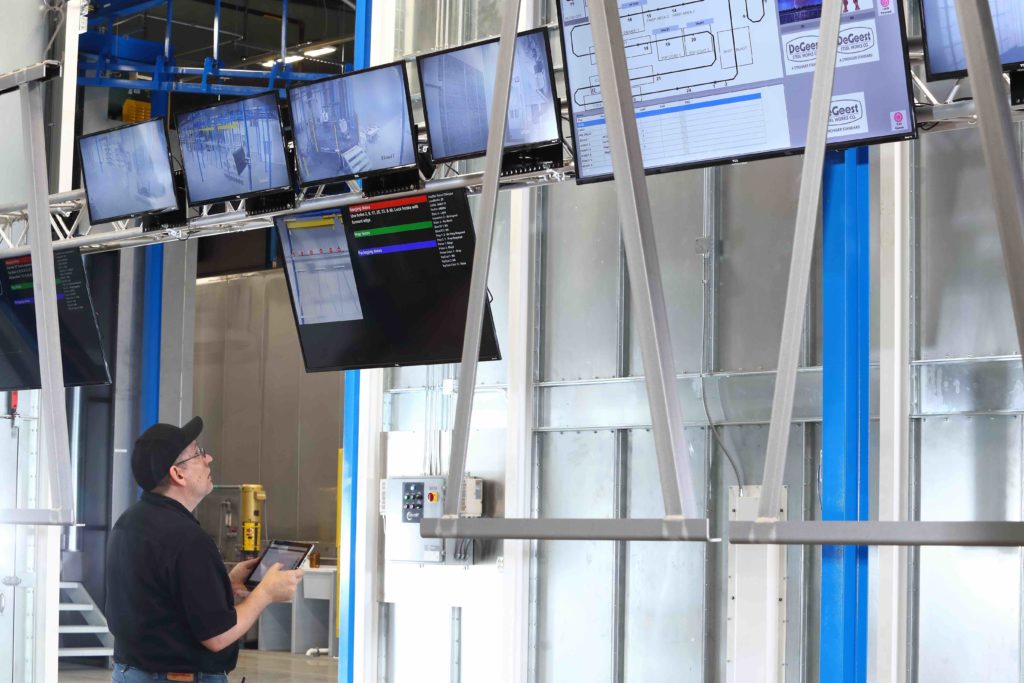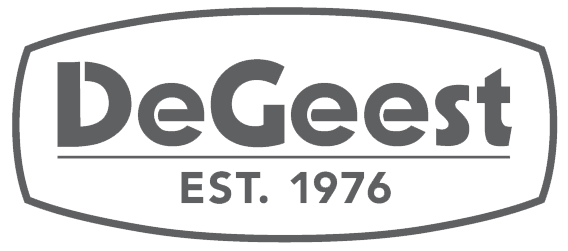Paint Command Center Launch Brings Reliability
When we started planning our automated robotic paint line, our engineers and software development team collaborated on how we could solve common problems that come with large paint systems. We concluded that most problems in large systems come from a lack of vital information for operators to make good decisions for the system. Often, they have to rely on one or two key operators’ skills and tribal knowledge to get the job done.
Our team decided that the best way to overcome these barriers was to visually deliver vital information needed for our team to make the best choices possible at all stages of our system. This allows them to simultaneously work independently and together to keep a large system efficiently running.

Now, we can collectively work towards a goal of maximizing our throughput by minimizing the chance of the painting robots having to wait for parts – Derek DeGeest, President
To do this, we focused on developing new applications for two major areas that could set us up to succeed:
#1. Schedule our parts more effectively.
Our team developed and wrote a new scheduling software that sorts and displays the most efficient paint schedule possible. This dashboard is available on numerous tablets and screens for our team to use on the shop floor.
#2. Monitor key areas on our paint line to execute the set schedule.
Custom software was also developed to give a combination of visual and written work instructions to help our operators throughout the system make sure quality and repeatability are controlled.

This means our robots can paint and reliably repeat for our customers over and over again. It’s all about creating the tools needed for our employees to succeed. – Marty Westra, Network and Systems Supervisor
These custom scheduling and interactive visual work instructions ensures a steady stream of parts are feeding into our line while simultaneously helping our operators know what parts to load and how to hang them.
What will we automate next?! Solve another very manual process in a normal painting operation–Identifying and properly labeling parts for shipping and customer receiving.
We wrote additional software to automatically print labels for every part as it exits our paint line. The labels contain a unique barcode tracking our customer’s part number, quantity, purchase order number, and job number. These labels also inform the operator of any unique assembly or packaging processes the parts need before shipping.
These labels have efficiently automated the tedious and repetitive task of retrieving and entering this data into our system. Customer’s with scanning systems can benefit from it as well.

Constructing the Paint Command Center was an effective way to present all of this valuable information and communicate it automatically in a dynamic way for our operators all in real time.
- 8 video cameras placed in key locations throughout the paint system
- 4 monitors displaying prepping instructions for parts as they pass by
- 1 overview screen that shows everything that’s happening on the line
Goal met: A Custom Paint Command Center to help our employees make the best decisions to keep the paint line flowing smoothly.
